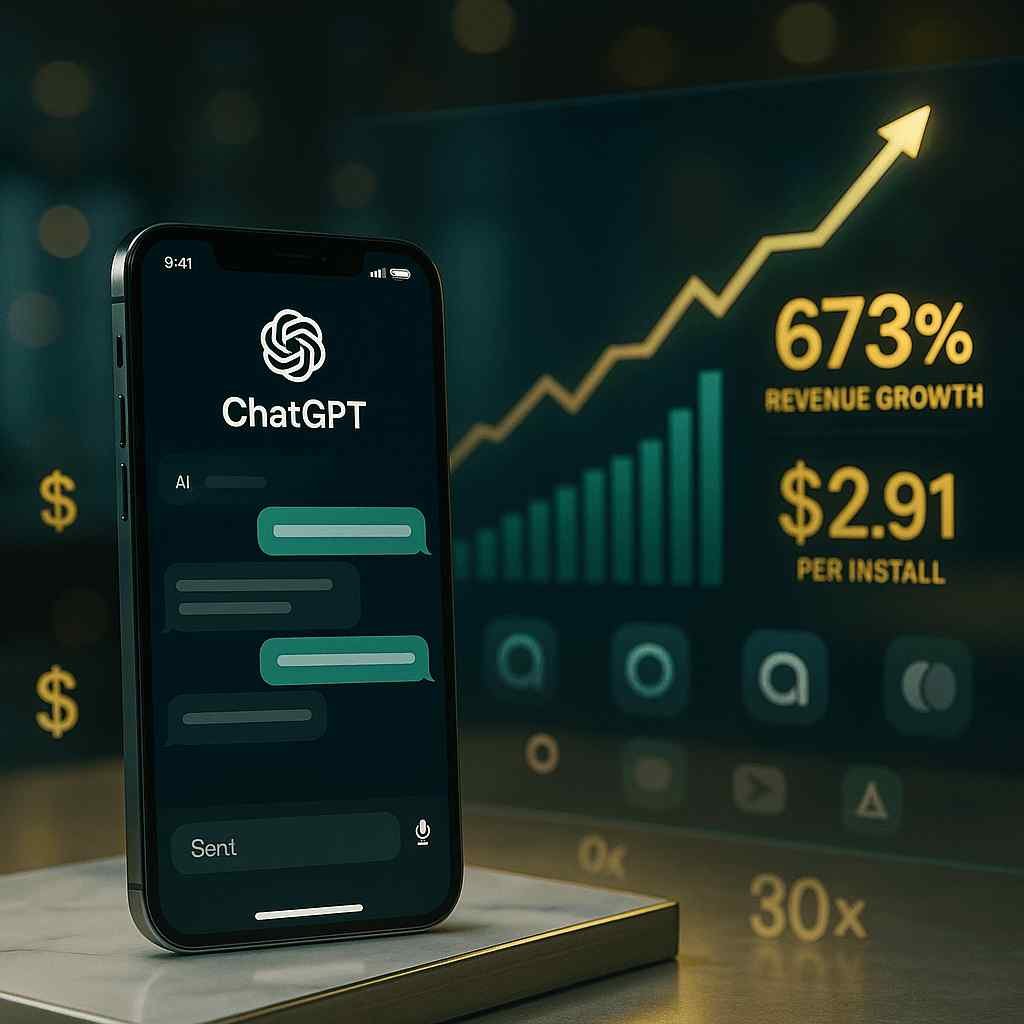OpenAI’s ChatGPT mobile app has surged past a milestone that few tech products reach this quickly: $2 billion in global consumer spending. Launched in May 2023, the app has become the clear leader in the AI chatbot market on both iOS and Android, according to analytics firm Appfigures.
To put its dominance in perspective, ChatGPT’s lifetime mobile earnings are nearly 30 times higher than those of competitors including Anthropic’s Claude, Microsoft’s Copilot, and Elon Musk’s Grok.
Explosive Growth in 2025
The pace of adoption this year has been remarkable. Between January and July 2025 alone, ChatGPT generated $1.35 billion in revenue—up 673% from $174 million during the same period last year. That translates to roughly $193 million per month, compared to just $25 million per month in 2024.
No rival comes close. Grok, the strongest of the challengers, has earned $25.6 million so far this year, or about 1.9% of ChatGPT’s revenue. Claude and Copilot have not disclosed figures, but estimates suggest they are far smaller players.
Why the App Format Wins
While AI companies also sell subscriptions directly on their websites and through APIs, mobile remains the main entry point for users. App stores simplify access and subscriptions, making them the first stop for most consumers curious about AI tools.
This edge has helped ChatGPT scale faster than competitors. Musk’s Grok, for example, launched on X (formerly Twitter) in late 2023 but only introduced standalone apps in 2025—months after ChatGPT had already secured a massive head start.
Spending Power Per Download
Appfigures data shows just how much users are willing to pay for ChatGPT compared to alternatives. On average, global consumer spending per download is:
- ChatGPT: $2.91
- Claude: $2.55
- Grok: $0.75
- Copilot: $0.28
The U.S. is ChatGPT’s biggest driver of revenue, where users spend about $10 per install—contributing 38% of total revenue. Germany is the second-largest market, responsible for 5.3%.
More Than a Chatbot
The app’s appeal lies in its versatility. Students use it to accelerate research, professionals rely on it for emails and reports, and businesses integrate it to streamline customer service. From brainstorming ideas to automating repetitive tasks, ChatGPT has moved beyond novelty into an everyday productivity tool.
The Bigger Picture
ChatGPT’s runaway success underscores a larger trend: mobile apps are the strongest bridge between AI technology and mainstream adoption. With billions flowing in through app stores alone, OpenAI’s model shows how consumer-facing AI can be monetized at scale.
For rivals, the challenge is steep. Even with high-profile backers and new app launches, catching up to ChatGPT’s early lead now looks like a long shot.







